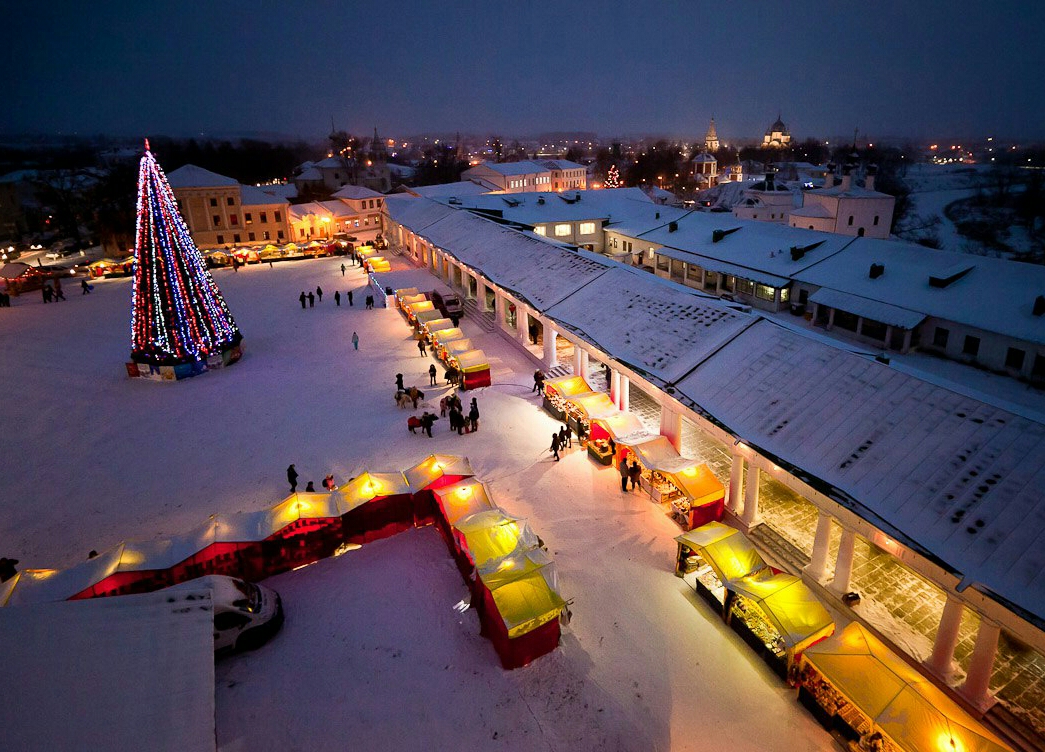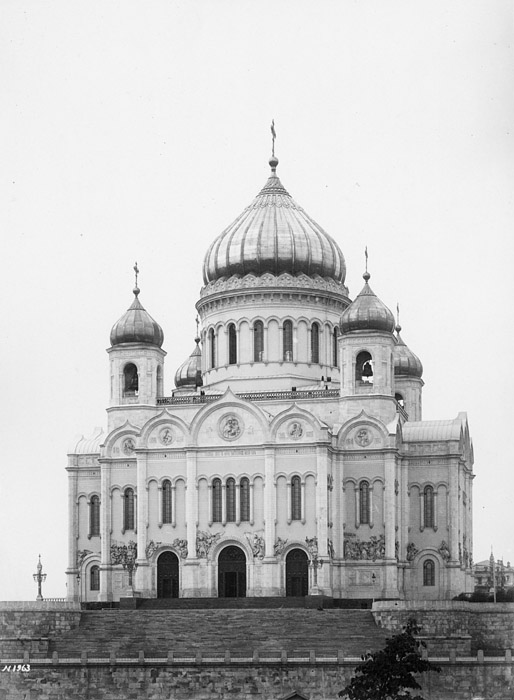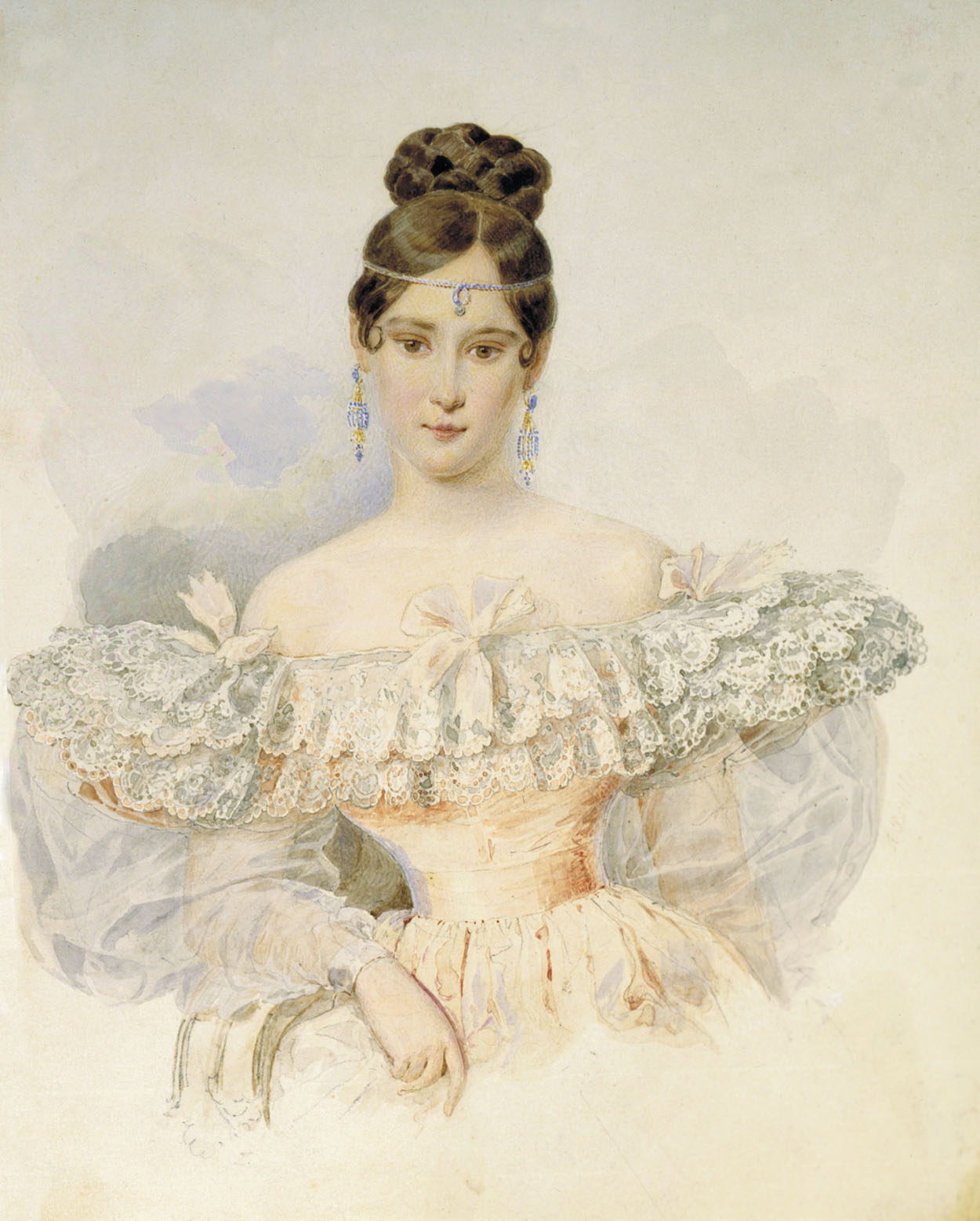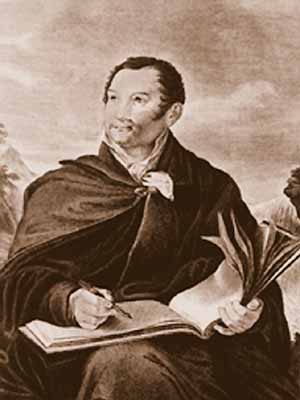|
Aleksey Gornostayev
Alexey Maksimovich Gornostaev (russian: link=no, Алексей Максимович Горностаев; February 18, 1808 – December 18, 1862) was a Russian architect, notable as a pioneer in Russian Revival, the builder of Valaam Monastery hermitages, Trinity-Sergius Convent in Saint Petersburg and Uspenski Cathedral in Helsinki. He is credited with the rebirth of traditional tented roof architecture of Russian North. He should not be confused with two other Gornostaev architects (not related), also Russian Revival practitioners and preservationists: * Ivan Ivanovich Gornostaev (1821–1874), chief architect of Saint Petersburg Public Library and University * Fyodor Fyodorovich Gornostaev (1867–1915), notable for Rogozhskoye Cemetery belltower (1908–1913) and restoration of landmark buildings in Suzdal, Kursk and Moscow. Biography Education Alexey Maksimovich Gornostaev was a son of foundry manager in Nizhny Novgorod region. He joined state service as a junior cle ... [...More Info...] [...Related Items...] OR: [Wikipedia] [Google] [Baidu] |
Karl Bryullov
Karl Pavlovich Bryullov (russian: Карл Па́влович Брюлло́в; 12 December 1799 – 11 June 1852), original name Charles Bruleau, also transliterated Briullov and Briuloff, and referred to by his friends as "Karl the Great", was a Russian painter. He is regarded as a key figure in transition from the Russian neoclassicism to romanticism. Biography Karl Bryullov was born on 12 (23) December 1799 in St. Petersburg, in the family of the academician, woodcarver, and engraver Pavel Ivanovich Briullo (Brulleau, 1760—1833) who was of Huguenot descent. He felt drawn to Italy from his early years. Despite his education at the Imperial Academy of Arts (1809–1821), Bryullov never fully embraced the classical style taught by his mentors and promoted by his brother, Alexander Bryullov. After distinguishing himself as a promising and imaginative student and finishing his education, he left Russia for Rome where he worked until 1835 as a portraitist and genre painter, th ... [...More Info...] [...Related Items...] OR: [Wikipedia] [Google] [Baidu] |
Suzdal
Suzdal ( rus, Суздаль, p=ˈsuzdəlʲ) is a town that serves as the administrative center of Suzdalsky District in Vladimir Oblast, Russia, which is located on the Kamenka River, north of the city of Vladimir. Vladimir is the administrative center of the surrounding oblast. As of the 2021 Census, its population was 9,286. Suzdal is one of the oldest Russian towns. In the 12th century, it became the capital of the principality, while Moscow was merely one of its subordinate settlements. Currently, Suzdal is the smallest of the Russian Golden Ring towns, but it has more than 40 historically important monuments and 200 architectural sites. Several of these sites are listed as UNESCO World Heritage Sites. History The town's history dates back probably to 999 or 1024, and in 1125 Yury Dolgoruky made Suzdal the capital of the Rostov-Suzdal principality. Suzdal began to function as a capital at the time when Moscow was still a cluster of cowsheds. In 1157, ... [...More Info...] [...Related Items...] OR: [Wikipedia] [Google] [Baidu] |
Neoclassicism
Neoclassicism (also spelled Neo-classicism) was a Western cultural movement in the decorative and visual arts, literature, theatre, music, and architecture that drew inspiration from the art and culture of classical antiquity. Neoclassicism was born in Rome largely thanks to the writings of Johann Joachim Winckelmann, at the time of the rediscovery of Pompeii and Herculaneum, but its popularity spread all over Europe as a generation of European art students finished their Grand Tour and returned from Italy to their home countries with newly rediscovered Greco-Roman ideals. The main Neoclassical movement coincided with the 18th-century Age of Enlightenment, and continued into the early 19th century, laterally competing with Romanticism. In architecture, the style continued throughout the 19th, 20th and up to the 21st century. European Neoclassicism in the visual arts began c. 1760 in opposition to the then-dominant Rococo style. Rococo architecture emphasizes grace, ornamen ... [...More Info...] [...Related Items...] OR: [Wikipedia] [Google] [Baidu] |
Konstantin Thon
Konstantin Andreyevich Thon, also spelled Ton (russian: Константи́н Андре́евич Тон; October 26, 1794 – January 25, 1881) was an official architect of Imperial Russia during the reign of Nicholas I. His major works include the Cathedral of Christ the Saviour, the Grand Kremlin Palace and the Kremlin Armoury in Moscow. Early life Konstantin, born in St. Petersburg to the family of a German jeweller, was one of three Thon brothers who all rose to become notable architects. He studied at the Imperial Academy of Arts (1803–15) under the Empire Style architect Andrey Voronikhin, best remembered for his work on the Kazan Cathedral, situated right in the middle of the Nevsky Prospekt. He studied Italian art in Rome from 1819 to 1828, and on his return home was admitted to the academy as its member (1830) and professor (1833). In 1854, he was appointed rector of the architectural division of the academy. Thon first attracted public attention with his sump ... [...More Info...] [...Related Items...] OR: [Wikipedia] [Google] [Baidu] |
Byzantine Architecture
Byzantine architecture is the architecture of the Byzantine Empire, or Eastern Roman Empire. The Byzantine era is usually dated from 330 AD, when Constantine the Great moved the Roman capital to Byzantium, which became Constantinople, until the Fall of Constantinople, fall of the Byzantine Empire in 1453. However, there was initially no hard line between the Byzantine and Roman empires, and early Byzantine architecture is stylistically and structurally indistinguishable from earlier Roman architecture. This terminology was introduced by modern historians to designate the medieval Roman Empire as it evolved as a distinct artistic and cultural entity centered on the new capital of Constantinople (modern-day Istanbul) rather than the city of Rome and its environs. Its architecture dramatically influenced the later medieval architecture throughout Europe and the Near East, and became the primary progenitor of the Renaissance architecture, Renaissance and Ottoman architecture, Ottoma ... [...More Info...] [...Related Items...] OR: [Wikipedia] [Google] [Baidu] |
Nicholas I Of Russia
, house = Romanov-Holstein-Gottorp , father = Paul I of Russia , mother = Maria Feodorovna (Sophie Dorothea of Württemberg) , birth_date = , birth_place = Gatchina Palace, Gatchina, Russian Empire , death_date = , death_place = Winter Palace, Saint Petersburg, Russian Empire , burial_place = Peter and Paul Cathedral, St. Petersburg, Russian Empire , religion = Russian Orthodox , signature = Signatur Nikolaus I. (Russland).PNG Nicholas I , group=pron ( – ) was Emperor of Russia, King of Congress Poland and Grand Duke of Finland. He was the third son of Paul I and younger brother of his predecessor, Alexander I. Nicholas inherited his brother's throne despite the failed Decembrist revolt against him. He is mainly remembered in history as a reactionary whose controversial reign was marked by geographical expansion, economic growth, and massive industrialisation on the one hand, and centralisation of administrative policie ... [...More Info...] [...Related Items...] OR: [Wikipedia] [Google] [Baidu] |
Pompeii
Pompeii (, ) was an ancient city located in what is now the ''comune'' of Pompei near Naples in the Campania region of Italy. Pompeii, along with Herculaneum and many villas in the surrounding area (e.g. at Boscoreale, Stabiae), was buried under of volcanic ash and pumice in the Eruption of Mount Vesuvius in 79 AD. Largely preserved under the ash, the excavated city offered a unique snapshot of Roman life, frozen at the moment it was buried, although much of the detailed evidence of the everyday life of its inhabitants was lost in the excavations. It was a wealthy town, with a population of ca. 11,000 in AD 79, enjoying many fine public buildings and luxurious private houses with lavish decorations, furnishings and works of art which were the main attractions for the early excavators. Organic remains, including wooden objects and human bodies, were interred in the ash. Over time, they decayed, leaving voids that archaeologists found could be used as moulds to make plast ... [...More Info...] [...Related Items...] OR: [Wikipedia] [Google] [Baidu] |
Imperial Academy Of Arts
The Russian Academy of Arts, informally known as the Saint Petersburg Academy of Arts, was an art academy in Saint Petersburg, founded in 1757 by the founder of the Imperial Moscow University Ivan Shuvalov under the name ''Academy of the Three Noblest Arts''. Elizabeth of Russia renamed it the Imperial Academy of Arts and commissioned a new building, completed 25 years later in 1789 by the Neva River. The academy promoted the neoclassical style and technique, and sent its promising students to European capitals for further study. Training at the academy was virtually required for artists to make successful careers. Formally abolished in 1918 after the Russian Revolution, the academy was renamed several times. It established free tuition; students from across the country competed fiercely for its few places annually. In 1947 the national institution was moved to Moscow, and much of its art collection was moved to the Hermitage. The building in Leningrad was devoted to the ... [...More Info...] [...Related Items...] OR: [Wikipedia] [Google] [Baidu] |
Alessandro Brullo
Alexander Pavlovich Brullov (, spelled Brulleau until 1822, when the family name was changed according to Russian pronunciation, sometimes also spelled Brulloff; 29 November 1798 – 9 January 1877) was a Russian artist associated with Russian Neoclassicism. Early life Alexander Brullov was born in Saint Petersburg into a family of French artists: his great-grandfather, his grandfather, his father and his brothers (including Karl Brullov) were artists. His first teacher was his father Paul. He attended the Imperial Academy of Arts architecture class from 1810 to 1820, and graduated with honors. Along with his brother, Karl, he was sent to Europe to study art and architecture with a stipend from the Society for the Promotion of Artists. Career Alexander Brullov spent eight years abroad, from 1822 to 1830, in Italy, Germany and France, studying architecture and art. He painted many watercolor portraits at that time. Among the best were those of Yekaterina Pavlovna Bakunina, John ... [...More Info...] [...Related Items...] OR: [Wikipedia] [Google] [Baidu] |
Pavel Svinyin
Pavel Petrovich Svinyin or Svinin (Па́вел Петро́вич Свиньи́н; 19 June 1787 – 21 April 1839) was a prolific Russian writer, painter, and editor known as a "Russian Munchausen" for many exaggerated accounts of his travels. He was Appolon Maykov's brother-in-law and Aleksey Pisemsky's father-in-law. Biography Svinyin, an inveterate Anglophile, accompanied Dmitry Senyavin in the second Archipelago expedition of 1806 and was employed at the Russian consulate in Philadelphia between 1811 and 1813. He was an aide-de-camp to General Moreau and was present when he died. His first book, ''Sketches of Moscow and St. Petersburg'' (1813), made its first appearance in Pennsylvania in English. He left one of the first written depictions of black church music in the United StatesDarden, Robert (1996). People Get Ready: A New History of Black Gospel Music. New York: Continuum International Publishing Group. . Page 40. and launched the publication of the literary magazi ... [...More Info...] [...Related Items...] OR: [Wikipedia] [Google] [Baidu] |
Ardatov
*Ardatov, Nizhny Novgorod Oblast, a urban-type settlement, work settlement in Ardatovsky District, Nizhny Novgorod Oblast, Ardatovsky District of Nizhny Novgorod Oblast
;Rural localities
*Ardatov (rural locality), Republic of Mordovia, a station settlement in Ardatovsky Selsoviet of Ardatovsky District of the Republic of Mordovia
{{SIA, populated places in Russia ...
Ardatov (russian: Ардатов) is the name of several inhabited localities in Russia. ;Urban localities * Ardatov (town), Republic of Mordovia, a town in Ardatovsky District of Republic of Mordovia The Republic of Mordovia (russian: Респу́блика Мордо́вия, r=Respublika Mordoviya, p=rʲɪsˈpublʲɪkə mɐrˈdovʲɪjə; mdf, Мордовия Республиксь, ''Mordovija Respublikś''; myv, Мордовия Рес ... [...More Info...] [...Related Items...] OR: [Wikipedia] [Google] [Baidu] |
Nizhny Novgorod
Nizhny Novgorod ( ; rus, links=no, Нижний Новгород, a=Ru-Nizhny Novgorod.ogg, p=ˈnʲiʐnʲɪj ˈnovɡərət ), colloquially shortened to Nizhny, from the 13th to the 17th century Novgorod of the Lower Land, formerly known as Gorky (, ; 1932–1990), is the administrative centre of Nizhny Novgorod Oblast and the Volga Federal District. The city is located at the confluence of the Oka and the Volga rivers in Central Russia, with a population of over 1.2 million residents, up to roughly 1.7 million residents in the urban agglomeration. Nizhny Novgorod is the sixth-largest city in Russia, the second-most populous city on the Volga, as well as the Volga Federal District. It is an important economic, transportation, scientific, educational and cultural center in Russia and the vast Volga-Vyatka economic region, and is the main center of river tourism in Russia. In the historic part of the city there are many universities, theaters, museums and churches. The city ... [...More Info...] [...Related Items...] OR: [Wikipedia] [Google] [Baidu] |



.jpg)





